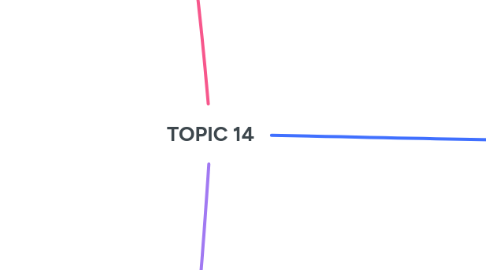
1. SPECIFIC METHODOLOGICAL FOUNDATIONS IN ENGLISH LANGUAGE TEACHING (ELT)
1.1. Learning experiences taking into account latest neuroeducation findings
1.1.1. Innovative Learning environtments Project
1.1.2. The Centre for Educational Research and Innovation
1.1.2.1. 7 principles of meaningful learning
1.1.2.1.1. Students centre of learning
1.1.2.1.2. Learning as a social act.
1.1.2.1.3. Emotions
1.1.2.1.4. Multiple Intelligences, by Gardner
1.1.2.1.5. Individual effort
1.1.2.1.6. Continuous and Formative assessment
1.1.2.1.7. Learnings transferred building horizontal connections among subjects
1.1.2.1.8. Add other principles that have influenced the current curriculum in Primary Educations
2. TECHNOQUES THAT FOCUS ON THE ACQUISITION OF COMMUNICATIVE COMPETENCE
2.1. Pair and group work
2.1.1. Problems
2.1.1.1. More noise
2.1.1.2. impossibility of coorecting all mistakes
2.1.1.3. risk to use the mother tongue
2.2. Total Physical Response (TOPIC 13) by James Asher
2.2.1. Kinaesthetic Sensory System
2.2.2. 3 principles
2.2.2.1. Understanding spoken language
2.2.2.2. Imperatives
2.2.2.3. Students not forced to speak
2.2.3. Role teacher
2.2.3.1. Parent
2.3. Functional Communication Activities
2.3.1. Information-gap act.
2.3.2. Information-gap games
2.3.3. Problem-solving act.
2.4. Social Interaction Activities
2.5. Humanistic Activities
2.5.1. Student as a whole person
2.5.2. Comprehension over Production
2.6. Projects
2.6.1. Advantages
2.6.1.1. Good study skills development
2.6.1.2. Opportunities for skills integrations
2.6.1.3. Linkage to real world
3. METHODS AND APPROACHES THAT FOCUS ON THE ACQUISITION OF COMMUNICATIVE COMPETENCE
3.1. The Communicative Approach (TOPIC 13)
3.1.1. Background
3.1.1.1. By Robert Langs (70's) as a reaction to the Audiolingual method
3.1.1.2. Changes in the 60s
3.1.1.2.1. Chomsky with LAD
3.1.1.3. British applied functional and communicative potential
3.1.1.4. Halliday, Hymes and Labou, Austin, Searl and Wilkens (1970's)
3.1.1.4.1. Communicative Approach
3.1.1.5. Council of Europe
3.1.1.5.1. Treshold Level English
3.1.2. Theory of language
3.1.2.1. Influenced by 3 linguistic theories
3.1.2.1.1. Generative Grammar
3.1.2.1.2. Functional Grammar
3.1.2.1.3. Communicative Competence
3.1.3. Theory of learning
3.1.3.1. How do learners acquire language?
3.1.3.1.1. Learning principles
3.1.4. The Syllabus
3.1.4.1. Based on a functional-notion syllabus, by David A. Wilkens
3.1.4.2. Contrasted with structural syllabus
3.1.4.2.1. grammatical items
3.1.4.2.2. phonological items
3.1.4.2.3. lexical items
3.1.4.3. Council of Europe included
3.1.4.3.1. functions
3.1.4.3.2. situations
3.1.4.3.3. notions
3.1.4.3.4. topics
3.1.5. Activities
3.1.5.1. Message over linguistic features of language
3.1.5.2. Characteristics
3.1.5.2.1. Interactive
3.1.5.2.2. Unpredictable
3.1.5.2.3. Within a context
3.1.5.2.4. Authentic
3.1.5.2.5. Relaxed atmosphere
3.1.5.3. Rod Ellis
3.1.5.3.1. must be a communicative purpose and desire
3.1.5.4. Littlewood, two types of activities
3.1.5.4.1. functional
3.1.5.4.2. social
3.1.6. Teacher and learners' role
3.1.6.1. Teacher
3.1.6.1.1. must facilitate communication porcess between students
3.1.6.1.2. must monitor student's performance and be participant
3.1.6.2. Learner
3.1.6.2.1. Active role
3.1.7. Materials
3.1.7.1. Text-based
3.1.7.2. Task-based
3.1.7.3. Realia
3.1.8. Procedure
3.1.8.1. Aim
3.1.8.1.1. Communicative Competence
3.1.8.2. Methodological procedure
3.1.8.2.1. 3 steps, by Byrne in the Teaching Oral English (1986) + as a principle of skill-acquisition theory of Anderson (2016)
3.2. The Natural Approach (TOPIC 13)
3.2.1. Background
3.2.1.1. 1970's Stephen Krashen and Tracy Terrel
3.2.2. Theory of language and learning
3.2.2.1. Hypothesis
3.2.2.1.1. Acquisition/learning hypothesis
3.2.2.1.2. Monitor hypothesis
3.2.2.1.3. Input hypothesis
3.2.2.1.4. Natural Hypothesis
3.2.2.1.5. Affective filter
3.2.2.2. Pedagogical Implications
3.2.2.2.1. Comprehensible input
3.2.2.2.2. Focus on comprehension
3.2.2.2.3. Silent periods
3.2.2.2.4. Relaxed Atmosphere
3.2.3. Syllabus
3.2.3.1. To develop basic communications skills
3.2.4. Activities
3.2.4.1. to promote subconscious acquisition
3.2.4.1.1. Krashen and Terrell
3.2.5. Teacher and learners' role
3.2.5.1. Teacher
3.2.5.1.1. Primary source of comprehensible input
3.2.5.2. Learner
3.2.5.2.1. changes depending of stage
3.2.6. Procedure
3.2.6.1. Teacher
3.2.6.1.1. constant flow of input
3.2.6.2. Learner
3.2.6.2.1. not required to speak
3.2.6.2.2. must respond to commands and questions
3.3. CLIL: Content Language Integrated Learning
3.3.1. Influenced by Landmark, Bruner, Piaget and Vigotsky
3.3.1.1. Promoted by Educational Department, based on
3.3.1.1.1. Do Coyle
3.3.2. Definition
3.3.3. Aims (6)
3.3.4. Theory of language
3.3.4.1. Content-obligatory language + Content-comatible language
3.3.4.2. develop linguistic abilities duaring lessons
3.3.4.3. Language is functional and dictated by the context
3.3.5. Theory of learning
3.3.5.1. 4C's (Council,2020)
3.3.5.1.1. Content
3.3.5.1.2. Communication
3.3.5.1.3. Cognition
3.3.5.1.4. Culture (Coyle 2007)
3.3.6. Activities and Strategies
3.3.6.1. Communicating subject content orally focusing on fluency
3.3.6.2. Developing listening and reading strategies
3.3.6.3. Cummin's Matrix tool
3.3.6.3.1. adapted by Do Coyle (2002)
3.3.7. Materials
3.3.7.1. Appropiate to age and stage
3.3.7.2. Linked to aims
3.3.7.3. Progressive
3.3.7.4. Varied
3.3.7.5. Motivating
3.3.8. Procedure
3.3.8.1. Before lesson
3.3.8.1.1. Examine possible problems with material
3.3.8.1.2. Choose appropiate material or adapt it
3.3.8.1.3. Write objectives, key vocabulary and activities on board
3.3.8.1.4. Provide language-rich environment
3.3.8.1.5. Design task for meaningful production
3.3.8.1.6. Plan planeary to think about content and language
3.4. The learner-centered Approach (TOPIC 13)
3.4.1. In the 70's
3.4.1.1. Emphasis on PROCESS
3.4.2. Characteristics
3.4.2.1. Aim
3.4.2.1.1. to train students to be good learners
3.4.2.2. Main areas involved
3.4.2.2.1. personal assessment
3.4.2.2.2. learning strategies
3.4.2.2.3. language awareness
3.4.3. Advantages
3.4.3.1. students take responsibility in their own learning
3.4.4. Disadvantages
3.4.4.1. match individual needs with the group ones
3.5. The Task-based Learning (TBL)
3.5.1. 1970's by Prabhu
3.5.2. Emphasis on meaning
3.5.3. Problem-solving
3.5.3.1. Information-gap act.
3.5.3.2. Reasoning-gap act.
3.5.3.3. Opinion-gap act.
3.5.4. Characteristics
3.5.4.1. Aim
3.5.4.1.1. create opportunities for language to use
3.5.4.1.2. help to activate prior knowledge
3.5.4.1.3. discover language needed to learn
3.5.4.2. Task
3.5.4.2.1. Project work
3.5.4.3. Natural learning
3.5.4.4. Phases
3.5.4.4.1. Pre-task phase
3.5.4.4.2. Task-cycle phase
3.5.4.4.3. Language-focus phase
3.5.5. Advantages and Disadvantages
3.6. Other methods (TOPIC 13)
3.6.1. Flipped Classroom, by Lage, Platt&Treglia
3.6.2. Problem-Based Learning
3.6.3. Game-Based Learning
3.6.4. Gamification, by Pahara 2008
3.6.5. Cooperative learning, by Johnson and Johnson
